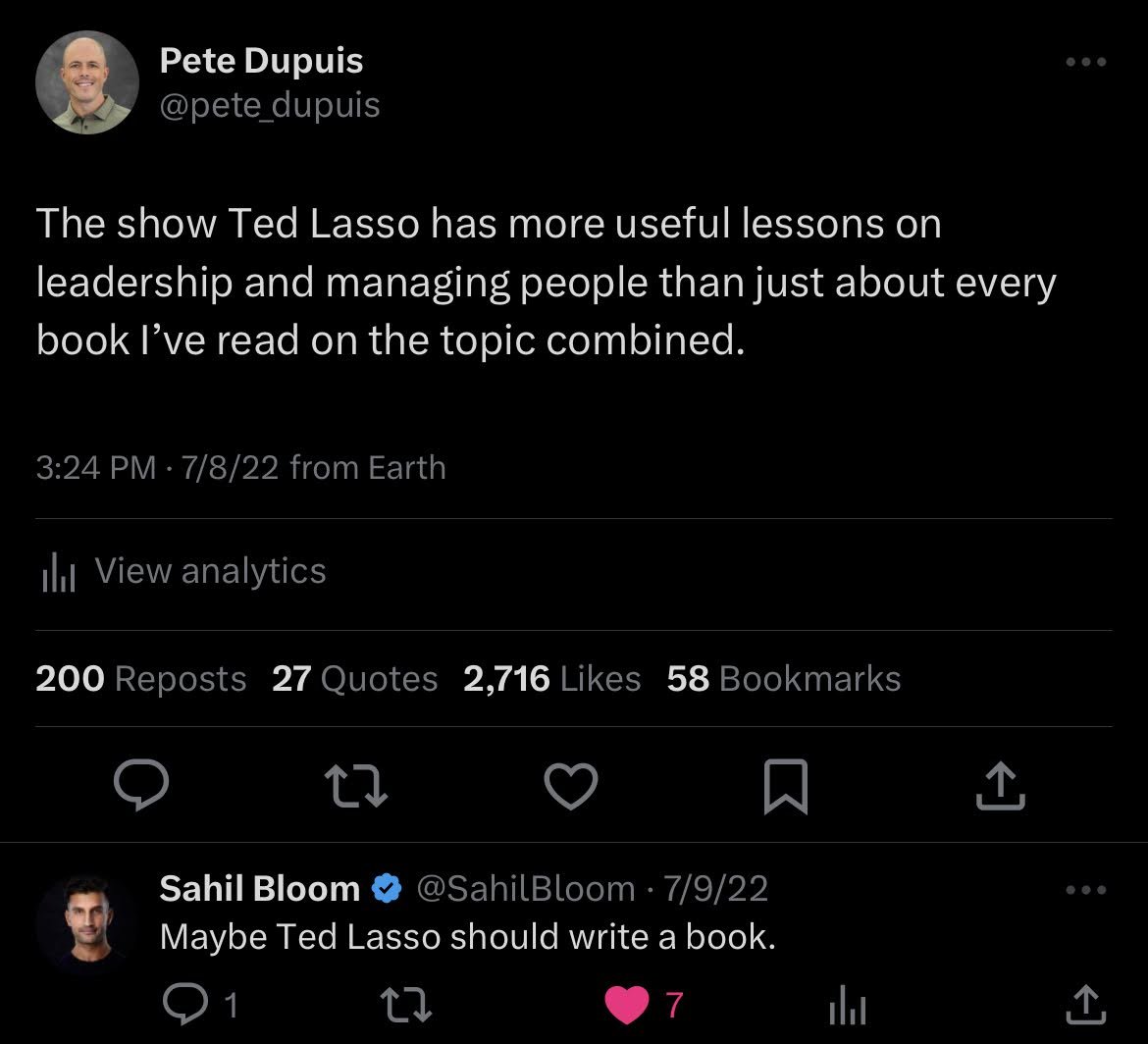The Algorithm Owes You NOTHING
A social media exercise…
Pull up that one social media post you published a while back that absolutely killed it. I’m talking about the one that had so much engagement that it instantly became the benchmark against which all future content you publish will be measured.
You’re lying if you claim not to instantly know the one — in fact, I’ll bet it’s currently pinned to the top of your profile.
Here’s an example of one that played especially well on Twitter and IG for me
Now I want you to recreate it.
I’m talking either word-for-word, or with the minor tweaks that you wish you could have made in hindsight…a clean slate do-over.
Go post it again.
This time for a (presumably) bigger audience
This time with the aesthetic and wording upgrades it deserves
This time with an improved caption and better hashtags
And this time, unfortunately, to the most current iteration of the Instagram algorithm.
(crickets)
It tanked comparatively, didn’t it?
It reached less accounts, generated less profile views, and drove significantly less shares.
What the hell, man?
This is especially frustrating because more people have voluntarily decided to follow your account during the months or years since you initially posted this exact thought. The message isn’t 60% less informative or relevant today, is it?
Can you do something about it? Should you?
Three Things to Remember:
1. Control What You Can
Building a business that is dependent upon perpetual status quo on a social platform that you do not own is as dumb as pouring a cement foundation for your home on top of the most active fault line on the planet. If you don’t control the distribution, you don’t control the reach of your message.
Build an email list. Establish relationships in real life. Build your own algorithm.
Most importantly, stop angrily screaming into the sky about Zuckerberg and Musk ruining your business – nobody cares.
2. You Are Not Your Content
One of the most dangerous things you can do is to attach your self-worth to the level of engagement your social media efforts are generating. Sure, some of your content might be subpar in comparison to your best stuff, but that doesn’t mean the people consuming it are sitting at home thinking you’re a loser.
“You are not your idea, and if you identify too closely with your ideas, you will take offense when challenged.”
- Ed Catmull, Co-Founder of Pixar
You’d care a whole lot less about what other people think of you and your Instagram posts if you were to learn how infrequently they actually think of you, period.
In that sense, maybe Zuck & The Gang are doing you a favor?
Kidding, sort of.
3. Change is Inevitable
Do you think the market cares that you don’t like being on video? How about the fact that you think you’re too old for TikTok? What about your aversion to embracing ChatGPT?
Nobody cares that “you’re old school” and that you wouldn’t be caught dead shooting short-form vertical video in your office. Nobody asked if you found Vaynerchuk and Hormozi to be obnoxious attention whores, but you keep telling us these things anyway.
When I started my gym in 2007, I didn’t have a “how I always did it.”
I had a recently acquired MBA, access to some interesting new platforms like Facebook, Twitter, and Youtube, and a willingness to integrate a little bit of each with the intention of building.
While it remained off my radar at the time, I’m certain there were several local gym owners who were pissed seeing us capture a massive chunk of the local market by employing these “silly” internet gadgets.
You know what we thought of them?
We thought they were the gym owner equivalent to the grumpy old man sitting on his porch yelling “get off my lawn.”
If you’re one of the self-declared old-school fellows who has made a commitment to never stoop to the lows of promoting your business the way all of the newest faces in the industry are doing so, you’re making that declaration from a rocking chair on the porch, and you don’t even know it.

































